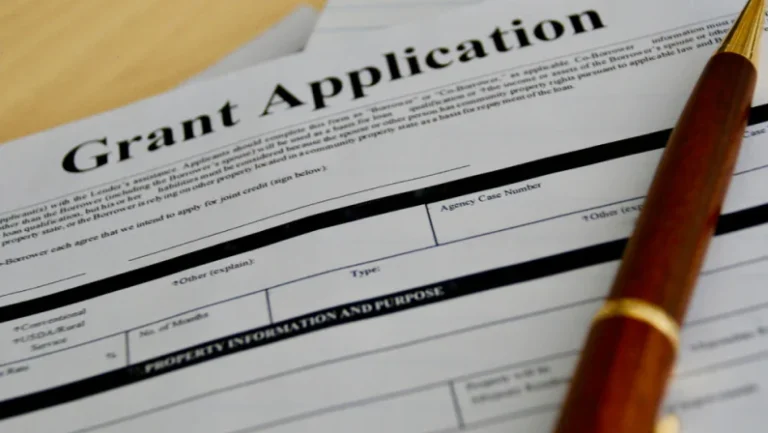When we talk about the creation of jobs, it’s easy to focus on the numbers, like how many roles are added, what industries are hiring, and where demand is growing. But true economic progress comes from something deeper: creating jobs that actually match the skills people have, and helping people build the skills they need for the jobs that are coming next.
That’s why aligning job creation strategies with workforce development is one of the most effective ways to support sustainable economic prosperity.
When job creation and workforce development are treated as two separate efforts, gaps emerge. You may have new roles opening in key sectors, but not enough skilled workers to fill them. Or you may have a ready workforce stuck in low-growth jobs without clear pathways to something better. The goal is labor market alignment, or connecting the creation of jobs with skills-based training programs that prepare people for success.
Let’s explore why this alignment matters, how it works, and what it looks like when done well.
Why Is It Important to Align Job Creation with Workforce Development?

At the heart of any strong economy is a workforce that can meet current and future labor demands. When job creation happens without workforce development, the result is often a mismatch—open roles with no qualified candidates or training programs that don’t lead to real job opportunities.
Aligning the two ensures that when companies expand or industries evolve, the local talent pool is equipped to grow with them. It also helps individuals find meaningful careers, not just short-term employment. This alignment improves employment readiness solutions, drives down unemployment, and supports economic development initiatives that lead to long-term prosperity.
What Are the Core Components of a Job Creation Strategy?
A strong job creation strategy focuses on building long-term, meaningful employment that supports both individual workers and the broader economy. That means taking a closer look at the bigger picture like industry trends, community needs, and the support systems people rely on to stay employed.
Here are the core components of a job creation strategy:
Understanding Industry Needs
A successful strategy starts with asking the right questions: Which sectors are growing? What roles are most in demand? This requires looking at labor market data, speaking with local employers, and identifying where skill gaps exist.
For example, if healthcare and advanced manufacturing are expanding in a region, the strategy should aim to support the creation of jobs in those sectors while ensuring the workforce is prepared to fill them.
Creating Supportive Infrastructure
Job creation doesn’t happen in a vacuum. People need reliable transportation to get to work, access to affordable childcare, and housing near employment hubs. If these supports aren’t in place, even the best new jobs may go unfilled. A strong strategy looks at the ecosystem that surrounds employment and works to remove barriers that keep people from participating in the labor force.
Building Inclusive Hiring Pathways
Equity plays a critical role in job creation. Jobs also need to be accessible to people from all backgrounds, including those who may have faced systemic barriers to employment. That means rethinking hiring practices, expanding outreach, and building bridges to historically underrepresented communities.
Connecting with Workforce Development Efforts
Job creation plans should be directly connected to training programs, upskilling initiatives, and educational pipelines. If new positions are opening in a specific field, are there accessible programs to help people get qualified for them? Are employers collaborating with training providers to shape curriculum around real-world needs?
Grounded in Partnerships and Planning
It takes a mix of government, education, nonprofit, and private sector partners working together to identify opportunities, pool resources, and respond to community needs. Long-term planning, open communication, and shared goals are what turn job creation from a numbers game into a lasting investment in people and places.
How Does Workforce Development Support Economic Growth?

Workforce development prepares people for the jobs being created. It equips them with technical skills, soft skills, and on-the-job training that make them ready to contribute meaningfully in the labor force.
When businesses have access to skilled, job-ready workers, they can scale faster. That, in turn, drives economic growth by increasing productivity, reducing turnover, and helping communities thrive. Workforce development also improves economic mobility for individuals, helping people shift from low-paying or unstable roles into sustainable careers.
In short, it’s not just about creating jobs but about creating access.
What Role Do Education and Training Programs Play in Alignment?
Skills-based training programs are important for keeping up with the pace of industry change. Technology evolves. Roles adapt. Without training programs that respond to those shifts, workforce development efforts fall behind.
Community colleges, vocational schools, and bootcamps all play a role in preparing people for in-demand fields. When these programs are informed by job creation strategies, they become much more effective. They can focus on teaching the skills that employers actually need today and in the years ahead.
Work-based learning, apprenticeships, and employer-sponsored training also help close the gap between education and employment.
How Can Data and Labor Market Insights Inform Strategy Alignment?
Labor market alignment doesn’t happen by chance. It happens when decision-makers use real data to guide their actions.
Data on employment trends, wage growth, skills shortages, and sector demand can reveal where the gaps are and where opportunities are forming. This helps educators, workforce boards, and economic development leaders build smarter programs and initiatives that respond to actual market needs.
The more accurate the data, the more precise the solutions.
What Are the Benefits of Sector-Based Workforce Initiatives?
Sector-based initiatives focus on aligning job creation and workforce development within specific industries, such as healthcare, logistics, manufacturing, tech, and more. These initiatives involve employers, educators, and workforce organizations working together to solve shared talent challenges.
Some benefits include:
- Tailored training programs that reflect industry standards
- Stronger pipelines from training to employment
- More efficient use of funding and resources
- Deeper employer engagement and long-term partnerships
These industry workforce partnerships allow for targeted economic development initiatives that meet both business needs and community priorities.
How Can Employers and Policymakers Collaborate Effectively?
Employers and policymakers have different roles, but when they collaborate, powerful things happen. Employers bring insight into what skills are needed, what roles are opening up, and what challenges they face in hiring. Policymakers bring access to funding, program design, and policy tools that shape workforce systems.
When these groups work together, job creation strategies become more aligned with real-world workforce needs. This collaboration supports programs that are scalable, sustainable, and responsive to changing economic conditions.
What Challenges Can Arise When Job Creation and Workforce Development Are Misaligned?

When the creation of jobs and workforce development efforts operate on separate tracks, it creates friction across the labor market. The most immediate issue is a talent mismatch. Employers struggle to find qualified workers, even when jobs are available, because training programs aren’t aligned with real-world demand.
Talent Shortages
If new jobs are created without a clear plan to train people for them, those roles may stay vacant. This slows down business growth and puts pressure on employers to either delay expansion or look outside the region.
Wasted Training Investments
On the flip side, if workforce programs are built without employer input, they may focus on outdated skills or credentials that don’t translate into employment. This leads to wasted time and resources for job seekers and training providers.
Underemployment
People may accept jobs that don’t match their experience or potential simply because the right opportunities aren’t available, or they weren’t prepared for them. This often results in lower wages and reduced job satisfaction.
Widening Economic Gaps
When certain communities don’t have access to the right training or aren’t included in hiring pipelines, they miss out on economic mobility. Misalignment can worsen disparities and limit inclusive growth.
Overall, the disconnect can frustrate job seekers, employers, and educators alike. Closing this gap requires intentional coordination, shared goals, and active investment in aligning skills with demand.
How Can Equity and Inclusion Be Embedded in Alignment Strategies?
True alignment must be equitable. That means making sure that job creation strategies don’t only benefit a select group, but open doors for people who have historically been left behind.
This includes:
- Designing inclusive recruitment practices
- Offering wraparound services like childcare and transportation
- Making skills-based training programs accessible to underserved communities
- Promoting diverse leadership in industry workforce partnerships
Embedding equity ensures that economic development initiatives support not just growth, but shared prosperity.
What Are Some Examples of Successful Alignment in Action?
When job creation strategies and workforce development efforts are aligned, the results can be powerful. Communities grow stronger, businesses find talent more easily, and individuals gain access to careers with long-term potential.
Here are a few real-world examples that highlight how this alignment works in practice:
Tech Apprenticeships in Urban Areas
In many cities, tech companies have partnered with local training providers to offer apprenticeship programs. These initiatives build full career pathways by combining classroom learning with on-the-job training. They also focus on equity, bringing in underrepresented talent from nearby neighborhoods and preparing them for high-growth tech roles.
Manufacturing Partnerships in Rural Communities
Smaller towns often struggle to retain young workers or attract new ones. In response, some rural communities have built partnerships between local manufacturers and technical colleges. These programs train students on specific machinery, production techniques, and safety protocols that employers are actively hiring for.
By aligning training with open roles, these partnerships not only fill talent gaps but also strengthen regional economies.
Healthcare Pipeline Programs
The healthcare industry is constantly evolving, and staffing shortages are common. Some hospital systems have worked closely with community colleges and workforce boards to develop targeted training for nursing assistants, technicians, and administrative professionals.
These programs offer stackable credentials, flexible learning options, and clear progression into full-time roles. In doing so, they help healthcare providers staff essential positions while giving learners a path into stable, high-demand careers.
Strategic Workforce Alignment Starts with the Right Guidance
Creating jobs is only half the story. The real impact happens when those jobs are connected to people who are ready to do the work. That’s where alignment between job creation strategies and workforce development makes all the difference.
If your organization or region is looking to strengthen labor market alignment, an economic development consultant can help chart a smarter course. LSI specializes in guiding communities through integrated workforce development, strategic planning, and targeted economic development initiatives that deliver real results.
We provide expert insight on everything from job creation to employment readiness solutions and help bridge the gap through education, industry workforce partnerships, and skills-based training programs.
Start creating opportunities with LSI. Contact us today!





